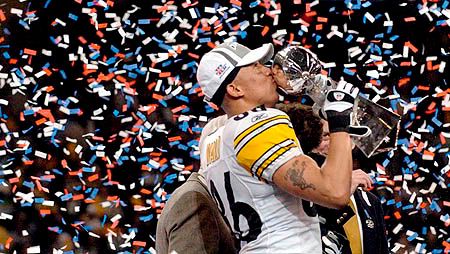From The AC/DC Resource Centre – www.ac-dc-resource-centre.com
In the beginning
Glasgow, Scotland, in the early 1960s was a rough, crowded industrial town whose depressed economy offered few options for working-class families. At the same time that much of Britain was experiencing economic hard times, a postwar boom was still in force in Australia. That underpopulated continent, bursting with natural resources but lacking sufficient population to fully exploit them, was particularly eager to encourage struggling Brits to emigrate to its shores. In addition, the Australian government had instituted a massive immigration program, which allowed immigrants to sail southward for a mere ten pounds a head.
So, in 1963, William and Margaret Young immigrated to Australia with eight of their nine children. They settled in Sydney, New South Wales.
When the Young family moved to Sydney, George formed The Easybeats with Johannes Jacob Hendrickus Vandenberg, better known as Harry Vanda. The quintet quickly made their mark on the Sydney scene and were to become Australia's biggest pop act during the mid-'60s. In 1966, the band headed to the UK and quickly established themselves in Britain. However, in 1970, The Easybeats disbanded; Vanda and Young returned to Sydney to work for Ted Albert in his newly formed Albert Productions organisation. But the success of The Easybeats was to have an enormous impact on George Young's brothers Malcolm and Angus.
Malcolm picked up the guitar first, graduating quickly from acoustic to electric. With ad hoc advice along the way from George he made rapid progress. Angus messed around with his older brother's guitars before his mother finally bought him his own.
Malcolm left school at 15 and found gainful employment as a machine maintenance engineer for a bra company (Berlei Bras). In 1971, he joined up with a band called Velvet Underground (no relation to the Lou Reed band). Ironically, the original singer in the band was called Brian Johnson.
In 1972, George invited Malcolm and Angus to join with his new band, the Marcus Hook Roll Band, for the recording sessions of his album 'Tales Of Old Granddaddy'. In fact, George and Harry didn't take the project very seriously so they thought it would be a good idea to include George's brothers to give them an idea of what recording was all about. That was the first thing Malcolm and Angus did before AC/DC.
At fourteen and nine months (the legal age you could leave school), Angus left and went to work for a soft porn magazine called Ribald as a printer. Meanwhile, Angus had already formed his own band, Tantrum, and had become proficient as a musician through playing along to any records he could find.
When the Velvet Underground fell apart in 1973, Malcolm determinded to put together a new one-guitar band with a keyboard player. But Malcolm changed his mind and decided he needed a second guitar player to fill out the sound and turned to Angus for help.
Malcolm's vision for his new band was a hard-edged boogie sound married to the in-vogue image of long hair and stack-heeled boots. For experience, Malcolm called on the services of drummer Colin Burgess, who had experience in several bands, bassist Larry Van Knedt and singer Dave Evans. Their name, AC/DC, came from the back of a vacuum cleaner. "AC/DC, it has something to do with electricity", Malcolm's sister Margaret said.
The abbreviation stands for Alternating Current/Direct Current in electrical parlance. However, in their naïvety the Young brothers were ignorant of the term's bisexual connotations, and the band were to spend the next few years vehemently insisting on their heterosexuality.
Their first performance was on New Year's Eve, 1973, in a small Sydney club called Chequers. They played a covers set of the Rolling Stones, Chuck Berry and the Beatles. AC/DC was born!
It's a long way to the top
In the next six months following their first concert, the AC/DC lineup changed a lot. Drummer Colin Burgess was successively replaced by Ron Carpenter, Russell Coleman and Peter Clack whilst Rob Bailey replaced Larry Van Knedt on bass.
In June 1974, AC/DC recorded their first single in Albert Studios, Sydney. The current lineup was then Malcolm Young, Angus Young, Dave Evans, Rob Bailey and Peter Clack. Two songs were recorded, 'Can I Sit Next To You Girl' and 'Rockin' In The Parlour', produced by Harry Vanda and George Young. The single was released in Australia during July on Albert Records and in New Zealand on Polydor. It became a minor regional hit in Perth and Adelaide.
Then began a heavy club tour across Australia. In Melbourne, they played at the Hard Rock Café which was owned by Michael Browning who became AC/DC's manager. Browning proved to be a shrewd choice as manager and was to make some vital decisions for the band during the next few years. His first and most important decision was the hiring of a driver to ferry the band around, a guy called Ronald Belford Scott, known to all as 'Bon'. Bon Scott persuaded the Young brothers to give him a chance as drummer and then as singer. After they tried him out, Bon took Dave Evans' place as AC/DC's frontman.
In January 1975, AC/DC recorded their debut album called 'High Voltage' with the lineup Malcolm Young, Angus Young, Bon Scott, George Young (on bass) and Tony Kerrante (on drums). The record was cut in 10 days and came out in February 1975. 'High Voltage' was an immediate success in Australia. The album and its first single, 'Baby Please Don't Go', entered the Australian charts in March.
In June 1975, the band released a non-LP single, 'High Voltage' (originally written for the 'High Voltage' album but not completed in time). The single coincided with a show at Melbourne's Festival Hall. AC/DC's set was shot by a four-camera film crew, for the purpose of producing a promotional video clip to be used by management in its attempts to raise overseas record company interest in the band.
Finally, AC/DC found a stable lineup when Phil Rudd and Mark Evans came in on drums and bass. Their second album called 'T.N.T.' was released at the end on 1975. It was a huge success, selling more than 100,000 copies and AC/DC became by the way the biggest rock'n'roll band in Australia. But what does it mean on a worldwide level.
More to follow about the greatest band ever, AC/DC

 Stumble It!
Stumble It!













No comments:
Post a Comment